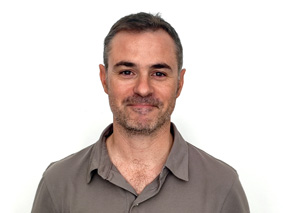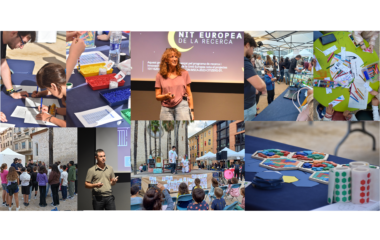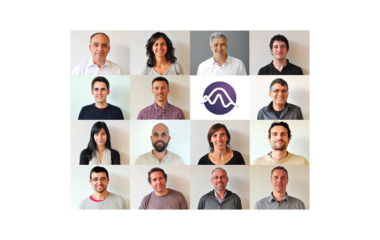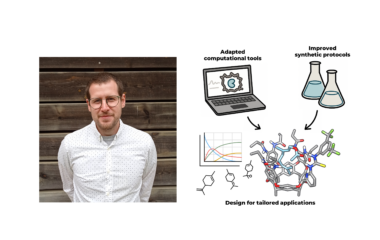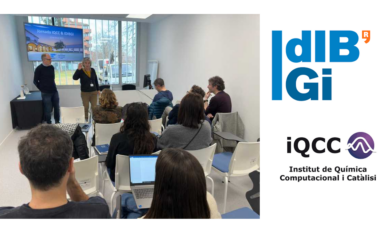- sec.iqcc@udg.edu
- +34 972 41 83 57
Lledó, Agustí
Molecular recognition and bioinspired catalysis with artificial receptors
Contact info:
Dr. Agustí Lledó
agusti.lledo@udg.edu
Tel. (+34) 610 865 823
Website
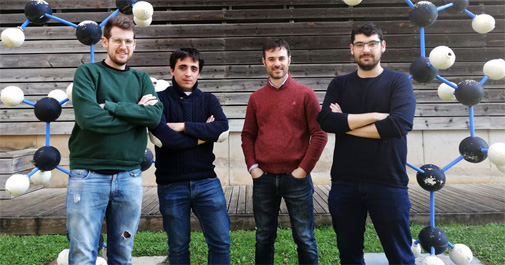
Selected publications
A flexible self-folding receptor for coronene
Chem. Sci., 2019, 10, 10351-10355
DOI: 10.1039/C9SC03158H
Rubén Álvarez-Yebra, Ricard López-Coll, Pere Galán-Masferrer, Agustí Lledó
Enantioselective Molecular Recognition in a Flexible Self-Folding Cavitand
Org. Lett., 2023, [], ASAP-
DOI: 10.1021/acs.orglett.3c00463
Rubén Álvarez-Yebra, Alba Sors-Vendrell, Agustí Lledó
Intermolecular hydrogen bonding in calix[5]arene derived cavitands regulates the molecular recognition of fullerenes
Chem. Commun., 2023, [], ASAP-
DOI: 10.1039/D3CC03780K
Rubén Álvarez-Yebra, Ricard López-Coll, Núria Clos-Garrido, David Lozano, Agustí Lledó
Calix[5]arene Self-Folding Cavitands: a New Family of Bio-Inspired Receptors with Enhanced Induced Fit Behavior
Israel Journal of Chemistry, 2023, [], ASAP-
DOI: 10.1002/ijch.202300077
Diego Vidal, Miquel Costas, Agustí Lledó
A Deep Cavitand Receptor Functionalized with Fe(II) and Mn(II) Aminopyridine Complexes for Bioinspired Oxidation Catalysis
ACS Catal., 2018, 8, 3667–3672
DOI: 10.1073/pnas.1507910112
Dr. Agustí Lledó
Research overview
FUNCTIONAL CAVITANDS
Cavitands are synthetic molecules with a permanent concave shape that can accommodate smaller molecules or ions inside. The encapsulation of a molecule in the confined space of cavitands has dramatic consequences for the reactivity of the bound species, and these effects can be harnessed to develop enzyme-like reactivity and catalysis. A prerequisite for this is the functionalization of the inner space with reactive groups that are in close contact with the bound substrate, very much like catalytic residues in the active site of an enzyme.
Our lab has developed a variety of functional receptors based on the amide-stabilized cavitand scaffold. We have developed urea and thiourea functionalized receptors towards the development of bioinspired carbocationic cylization reactions. Additionally, we have proven the versatility of this system by attaching it to highly reactive iron and manganese complexes used in C–H oxidation reactions. This system provides a robust and promising platform for bioinspired site-selective oxidation reactions.
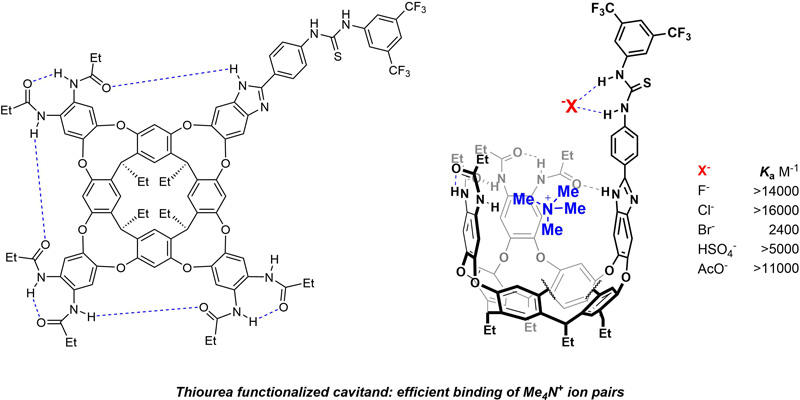
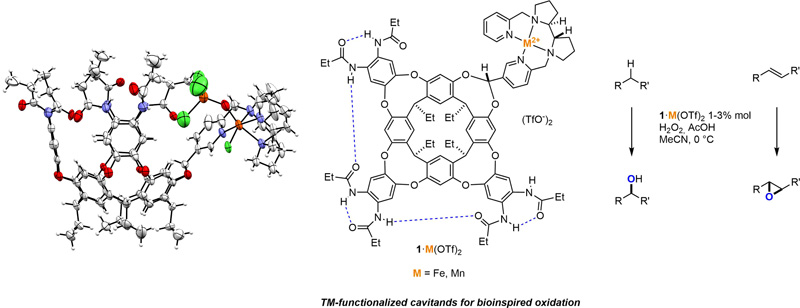
NEW SYNTHETIC RECEPTORS
A limitation of conventional cavitands is their narrow binding space. In addition, these receptors have a strong preference for rigid pseudo-cylindrical conformation, which poses a limitation to accessing adaptable confined spaces. A distinct feature of proteinogenic receptors is their conformational flexibility, which allows them to adapt to guests of different sizes and shapes through induced fit or conformational selection phenomena. This is an essential trait for some biological functions (e.g. enzymatic catalysis) that is very difficult to introduce by design in artificial systems.
Within this conceptual framework, a second research direction in our lab aims at developing new synthetic platforms that would be more amenable to generalizing enzyme-like catalysis. Our efforts focus on hydrogen bond stabilized calix[5]arene derived cavitands. We have developed a receptor that is structured, yet flexible enough to adapt to an incoming guest of complementary size, such as coronene, a large polycyclic aromatic hydrocarbon. Current efforts are directed towards using these expanded and flexible confined spaces to promote new bioinspired reactivity.
 |
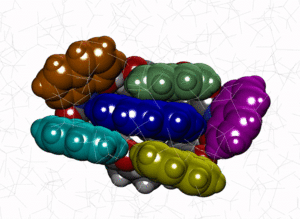 |
People
Principal Investigator
Staff and Postdocs
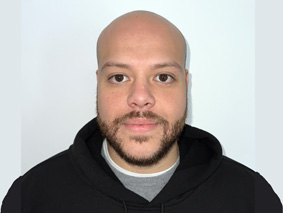
Hugo Marchi
Postdoc
Supervisor:- A. Lledó
PhD and MACMoM students
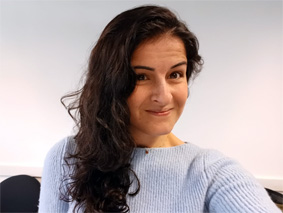
Eva Prat
PhD student
Supervisor:- A. Lledó
- E. Palomares (ICIQ)

Fiza Fariha
PhD Student (FPI)
Supervisor:- M. Swart
- A. Lledó

Zanira Mushtaq
PhD Student (FI)
Supervisor:- M. Swart
- A. Lledó
Funding
MCIU Proyectos I+D
Researcher: Dr. Agustí Lledó
Reference: PID2023-146498NB-I00
Funding: 125.000 €
Period: 01/09/2024 – 31/12/2027
MICIU Proyectos I+D
Researcher: Dr. Xavi Ribas and Dr. Agustí Lledó
Reference: TED2021-130573B-100
Funding: 322.000 €
Period: 01/12/2022 – 30/11/2024
MICIU. Redes temáticas
Researcher: Dr. Agustí Lledó and Prof. Miquel Solà
Reference: RED2024-154178-T
Funding: 28.000 €
Period: 2025 – 2027
Collaborations
News
European Researchers’ Night 2025 at IQCC
Every year in September since 2008, the IQCC is organizing together with the
IQCC Science Slam 2025, October 8th 12:30h
Since 2015 the IQCC is organizing a Science Slam. On Wednesday October 8th the IQCC
PhD defense Ricard López Coll
On 31st of July will be the defense of the doctoral thesis of Ricard López
Interdisciplinary collaboration to address health challenges through computational chemistry
The Dr. Josep Trueta Biomedical Research Institute of Girona (IDIBGI) and the Institute

